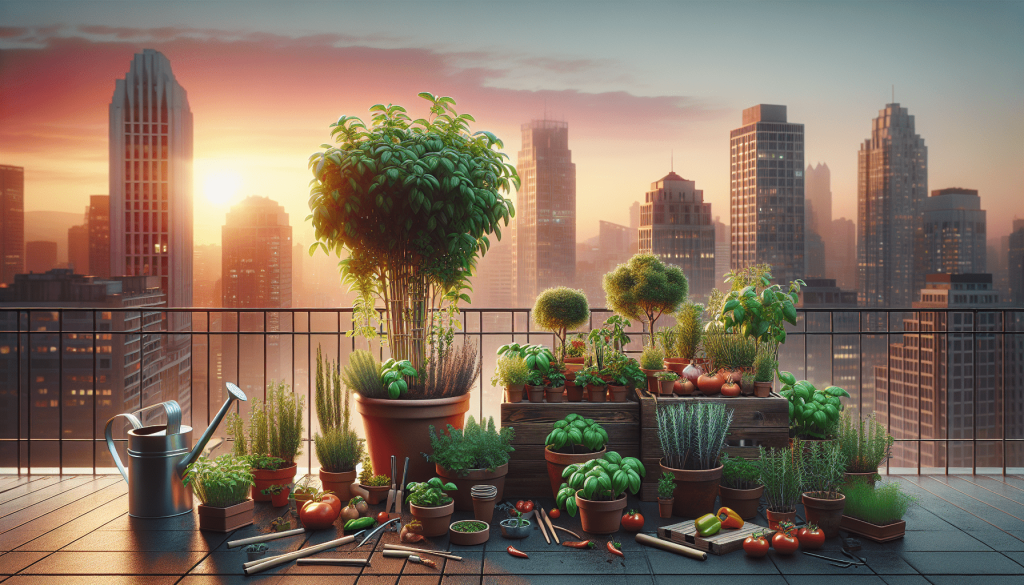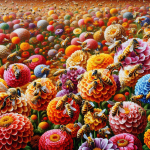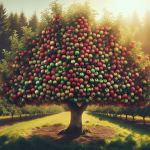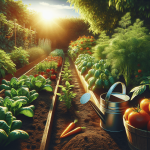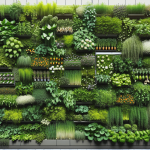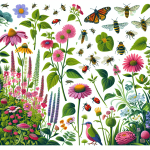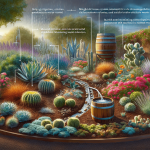This post may contain affiliate links. As an Amazon Associate, we may earn commissions from qualifying purchases.
Thinking about starting your own garden but don’t have much space? Well, you’re in luck! In this article, we’ll explore the exciting world of container gardening and answer the burning question on your mind: Can I grow vegetables and herbs in containers? Whether you have a tiny balcony, a sunny window sill, or a limited backyard, you’ll be delighted to discover how easy and rewarding it is to cultivate your own fresh produce right at home. So, grab your gardening gloves and let’s dig into the wonderful world of container gardening! Yes, you definitely can! Growing vegetables and herbs in containers is not only possible but also offers several benefits. Whether you have limited space, want more mobility and flexibility in your gardening endeavors, or simply prefer a low-maintenance approach, container gardening can be a great solution for you. In this article, we will explore the various advantages of growing vegetables and herbs in containers and provide you with tips on how to choose the right containers, select suitable plants, prepare the soil mix, care for your plants, overcome common challenges, and get creative with your container gardening. So let’s dive in and discover the world of container gardening together!
Benefits of Growing Vegetables and Herbs in Containers
Space-saving option
One of the main advantages of container gardening is that it allows you to make the most of limited space. Whether you have a small balcony, a tiny backyard, or even just a sunny window sill, you can grow a wide variety of vegetables and herbs in containers. By utilizing vertical space with trellises and hanging baskets, you can maximize the number of plants you can grow, even in a small area. So if you’ve always dreamt of having a flourishing vegetable garden but thought it was impossible due to space constraints, container gardening is here to make your dream come true.
Mobility and flexibility
Another great benefit of container gardening is the mobility it provides. Unlike traditional in-ground gardens, containers can be easily moved around to take advantage of the best sunlight, protect against extreme weather conditions, or simply refresh the look of your outdoor space. This flexibility allows you to experiment with different locations and setups, ensuring optimal growth and giving you the freedom to rearrange your garden whenever you desire.
Less maintenance and weed control
Container gardening generally requires less maintenance compared to traditional gardens. Since containers provide a confined space for your plants, weeds have a harder time invading your garden, saving you the tedious task of frequent weeding. Additionally, containers can be elevated to a more ergonomic height, reducing the strain on your back and making it easier to tend to your plants. With less time spent on maintenance, you can relax and enjoy the beauty of your container garden without feeling overwhelmed by the constant demands of traditional gardening.
Protection from pests and diseases
Container gardening can offer a level of protection against pests and diseases. By keeping your plants off the ground, you can minimize the risk of insect infestations and diseases caused by soil-borne pathogens. Additionally, containers can be placed in strategic locations or equipped with protective barriers such as mesh screens to keep common pests like slugs and snails at bay. This added layer of defense helps to ensure the health and vitality of your plants, allowing you to enjoy a bountiful harvest.
Now that we’ve explored the various benefits of container gardening, let’s move on to the next section and discuss how to choose the right containers for your plants.
Choosing the Right Containers
Size and depth considerations
When it comes to choosing the right containers for your vegetable and herb garden, size and depth are crucial factors to consider. Generally, larger containers provide more room for root development and can potentially support larger plants. However, smaller containers can work well for compact varieties or herbs with shallower root systems. Before purchasing your containers, it’s important to research the specific space requirements of the plants you intend to grow and choose containers that will accommodate their needs.
Material selection
Containers can be made from various materials, each with its own advantages and considerations. Common options include plastic, terracotta, wood, and fabric. Plastic containers are lightweight, affordable, and retain moisture well, making them a popular choice for beginners. Terracotta containers have a classic and aesthetically pleasing look, but they can dry out quickly and may require more frequent watering. Wood containers provide good insulation for plant roots, but they can deteriorate over time. Fabric containers offer excellent drainage and air circulation, promoting healthy root growth, but they may not be as visually appealing. Consider the specific needs of your plants and the climate in your area when choosing the material for your containers.
Drainage requirements
Proper drainage is essential for container gardening success. Without adequate drainage, excess water can accumulate in the containers, leading to root rot and other moisture-related issues. When selecting containers, ensure they have drainage holes or can accommodate the addition of drainage holes. You can also use materials like gravel or broken pottery shards at the bottom of the container to improve drainage. Additionally, consider using pot feet or elevating the containers slightly to prevent water from pooling underneath them.
Choosing the right pots for specific plants
Different plants have different needs when it comes to containers. Some plants, particularly those with deep root systems, may require deeper pots to allow for proper root growth and development. Conversely, shallow-rooted plants such as herbs may thrive in shallower pots. Research the specific requirements of the plants you intend to grow and choose containers that will provide them with ample space to flourish. It’s also important to consider the growth habits of your plants. For instance, plants that tend to sprawl or vine, such as tomatoes or cucumbers, may benefit from larger containers or the addition of trellises or stakes for support.
With the right containers in hand, let’s move on to the next section and explore the suitable vegetables and herbs for container gardening.
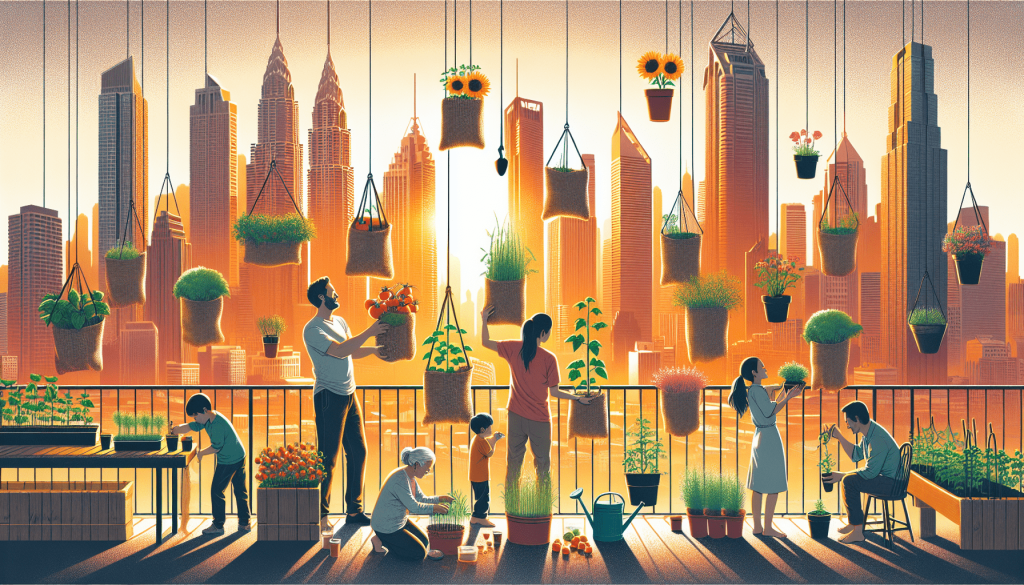
Selecting Suitable Vegetables and Herbs for Container Gardening
Determinate and dwarf varieties
When choosing vegetables for container gardening, it’s important to select varieties that are well-suited to the confined space of a container. Determinate or compact varieties are ideal choices as they tend to stay more compact and have a shorter stature compared to indeterminate varieties. Dwarf varieties, which are specifically bred to be smaller, are also great options for containers. Examples of determinate and dwarf vegetables include cherry tomatoes, bush beans, compact peppers, and mini cucumbers. These varieties not only fit well in containers but also produce abundant yields, allowing you to enjoy a fruitful harvest.
Herbs that thrive in containers
Herbs are excellent candidates for container gardening, as they can be grown in small spaces and provide a steady supply of fresh flavors for your cooking. Many herbs are well-suited to container gardening, including basil, parsley, mint, rosemary, and thyme. These herbs thrive in containers and can be easily incorporated into your outdoor space or even placed on a sunny windowsill indoors. By growing your own herbs, you can elevate your culinary creations and enjoy the satisfaction of using fresh, homegrown ingredients.
Leafy greens and lettuces
Leafy greens and lettuces are another group of vegetables that can be successfully grown in containers. Varieties such as spinach, kale, Swiss chard, and lettuces have shallow root systems, making them ideal candidates for smaller pots. Their compact growth habits also make them suitable for vertical gardening or combining multiple plants in one container. These leafy greens offer a plethora of nutritional benefits and can be enjoyed in fresh salads, smoothies, or cooked dishes.
Root vegetables and tubers
Contrary to popular belief, many root vegetables and tubers can be grown in containers. Varieties like carrots, radishes, beets, and potatoes can thrive in deep containers that provide ample space for root development. When selecting containers for root vegetables, opt for deeper pots to ensure the roots have enough room to grow downwards. Depending on the specific vegetable, you may need to choose larger containers to accommodate the size of the mature plant. With a bit of careful planning and attention, you can grow delicious and nutritious root vegetables right at your doorstep.
Climbing plants and vining vegetables
If you’re looking to maximize your container garden’s vertical space, climbing plants and vining vegetables are the way to go. Tomatoes, cucumbers, pole beans, and peas are examples of plants that benefit from vertical support and can be trained to grow upwards on trellises or stakes. By utilizing trellis systems or tall containers, you can create a stunning visual display while also optimizing your space. Just make sure to provide adequate support for these plants and ensure the trellises or stakes are sturdy enough to withstand their weight.
Now that you have an understanding of the suitable vegetables and herbs for container gardening, let’s move on to the next section and discuss how to prepare the soil mix for your containers.
Preparing the Soil Mix
Balancing nutrient content
The soil mix used in container gardening plays a crucial role in the overall health and productivity of your plants. Unlike in-ground gardens, container plants rely solely on the nutrients provided in the soil mix, as they cannot draw nutrients from the surrounding soil. Therefore, it’s important to ensure the soil mix is well-balanced and rich in nutrients. You can achieve this by using high-quality potting soil enriched with organic matter, compost, or well-rotted manure. These additions will help provide the necessary nutrients for your plants’ growth and development.
Ensuring good drainage and aeration
In addition to nutrient content, proper drainage and aeration are vital aspects of container gardening. To ensure good drainage, it’s essential to use a well-draining soil mix that retains enough moisture for the plants, but also allows excess water to flow freely. You can achieve good drainage by adding materials like perlite, vermiculite, or coarse sand to the soil mix. These materials help create air pockets and prevent the soil from becoming overly compacted. Adequate aeration allows for healthy root development and prevents issues such as root rot.
Choosing organic and non-chemical options
If you prefer to garden using organic and non-chemical methods, there are various soil amendments and fertilizers available that can help you achieve your desired approach. Organic potting soils, compost, and well-rotted manure are great options for enriching the soil mix naturally. You can also incorporate organic fertilizers, such as fish emulsion or seaweed extract, to provide additional nutrients to your plants. Additionally, using organic pest control methods, such as companion planting or introducing beneficial insects, can help control pests and diseases without resorting to chemical interventions.
With the soil mix prepared, let’s move on to the next section and learn how to plant and care for your container vegetables and herbs.
